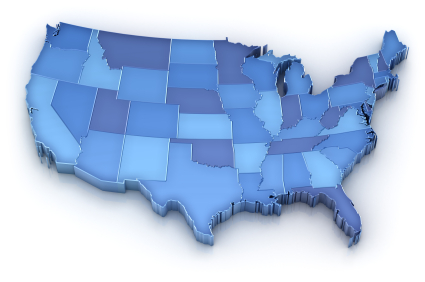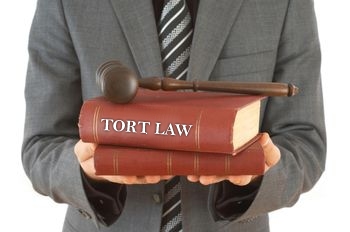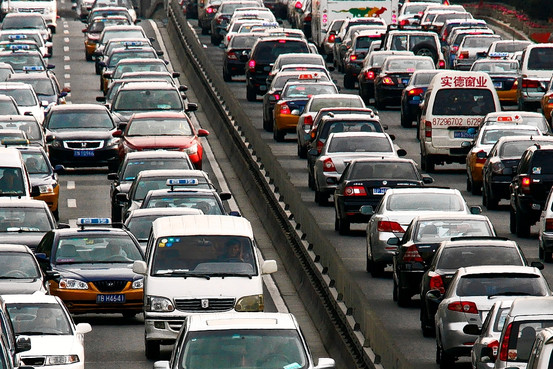Auto Rates by State
 There are many factors that can affect your insurance premiums. Your personal driving record and claims history are two major factors that drive premiums. What many people don’t realize is that rates vary greatly from one state to the next. Here is information about auto insurance rates in different states.
There are many factors that can affect your insurance premiums. Your personal driving record and claims history are two major factors that drive premiums. What many people don’t realize is that rates vary greatly from one state to the next. Here is information about auto insurance rates in different states.
Find the best auto insurance rates in your state now by entering your zip code above!
The Most Expensive States
Some states are more expensive than others for insurance. If you live in one of these ten states, expect your rates to be higher than average.
- Washington, DC has the highest rates in the country, with the average being $1126 annually.
- Louisiana is a close second with an average of $1105.
- New Jersey is not far behind at $1081.
- Florida sits at $1055.
- New York is $1044, but this is largely driven by rates in New York City, which can easily run in excess of $2400 annually.
- Delaware insurance premiums average out at $1007.
- Rhode Island drivers can expect to pay around $986.
- Nevada drivers face an average of $970, with the rates for drivers in Las Vegas being the highest.
- Connecticut insurance premiums are around $950.
- Maryland average insurance costs are around $922.
It’s common for rates in large cities to be higher due to the sheer number of people on the roads. If you live in one of these areas with higher rates, you will want to shop around for auto insurance carefully and thoroughly. Comparison sites can save you a great deal of time when shopping for insurance because they will show you different quotes side by side for easy comparison.
The Least Expensive States
With rates ranging from $500 to $600, the least expensive states are as follows:
- North Dakota
- Iowa
- South Dakota
- Nebraska
- Idaho
- Kansas
- Wisconsin
- North Carolina
- Maine
- Indiana
Even in these states, it’s always better to save more money when you can. While you will enjoy lower rates than most areas, take the time to comparison shop and look at different companies so you can get the lowest rates possible.
Free Car Insurance Comparison
Compare Quotes From Top Companies and Save
Secured with SHA-256 Encryption
Congested Roads
People who live in areas with congested roads typically pay more for insurance. Drivers in New York City, for example, will pay double what drivers in Silver Creek, New York will pay. If you live in one of these areas, be sure to look into available discounts to help you save money. If you are moving into one of these areas, look into the surrounding suburbs. You may decide that a slightly longer commute is worth it for the insurance savings, less traffic on the weekends and generally slower pace. Use a comparison site to easily compare insurance quotes based on living in the heart of the city or one of the surrounding areas.
Fraud
Something that really drives up the overall cost of insurance is fraud. When insurance companies are ripped off by criminals they don’t just eat the loss themselves. They pass the loss on to their customers through higher premiums. Louisiana, for example, faces higher rates due to a high rate of fraud over the years. Supporting legislation that cracks down on fraudsters and delivers harsher penalties is an excellent long-term solution to high insurance rates.
In the short-term, use comparison sites to find companies that offer lower rates. Just as the rates can vary from one city to another based on congestion, the amount of claims being paid out between different areas can also affect rates. Using a map, determine which different cities and suburbs you can commute to work from. With the help of insurance rate comparison services you can then determine which ones enjoy the lowest insurance rates.
State Laws
Before pricing out the coverage you want, check the laws in the state to be sure you are getting proper coverage. Every state has different laws regarding minimum coverage levels. Find out what you must carry before checking out different quotes. Every state requires drivers have liability coverage for medical costs and injuries to other parties and property damage against other parties.
You must carry the state minimum levels, but it is highly recommended that you carry more. Here are some of the suggested levels if you want to keep yourself truly protected.
Free Car Insurance Comparison
Compare Quotes From Top Companies and Save
Secured with SHA-256 Encryption
Injury per person/ per accident – State minimums may be as low as $15,000 and $30,000 for death or medical payments to other parties. But considering the high cost of medical treatment, these numbers will leave you exposed to a lawsuit. Even if you don’t have a home or have many assets, you probably still have a job. Any party that you cause damage to can sue you and garnish the wages from your job.
Liability – Some states require liability coverage as low as $10,000. But this won’t cover the cost of most new cars should you cause an accident that totals a vehicle. Your insurance will only pay up to the maximum level of coverage that you select, and you will have to pay the difference.
Tort or No-Fault
When comparing insurance policies, you may run across these terms. A tort state refers to one in which you can be personally sued for damages in an accident. If you live in a tort state, make sure your coverage for personalinjury to other people is high enough to protect all of your assets. The last thing you want is to lose your house over medical bills from an accident. Be sure that your property damage coverage is also high enough to shield your assets in case you are sued.

No-fault states are a little different. In no-fault states, your own insurance will cover your own medical bills regardless of who caused the accident. You can carry state minimum injury protection without fear of lawsuit. Keep in mind, however, that your personal health insurance can refuse to pay for treatment for injuries sustained in an auto accident. Considering the high cost of medical treatments, it’s wise to choose higher coverage levels for personal injury.
While no-fault states won’t allow people to sue for injuries and medical bills, they can still sue for damaged. The person who caused the accident is responsible for all property damage, even in no-fault states. Be sure that you carry enough in property damage coverage to keep your earnings and assets protected from lawsuits.
Finding the Right Coverage
When shopping for insurance it’s tempting to save money by choosing less coverage. This is never a wise idea, however. Go for the higher coverage levels so you won’t have to worry about being sued. Save money by using comparison websites so you can quickly find the company with the best rates. Save more money by asking about discounts and opting for a higher deductible.
Now that you know some of the specifics about state auto insurance rates it’s time to purchase an auto insurance policy. Save time and money by entering your zip code below to get free insurance quotes from all the top auto insurance providers!

